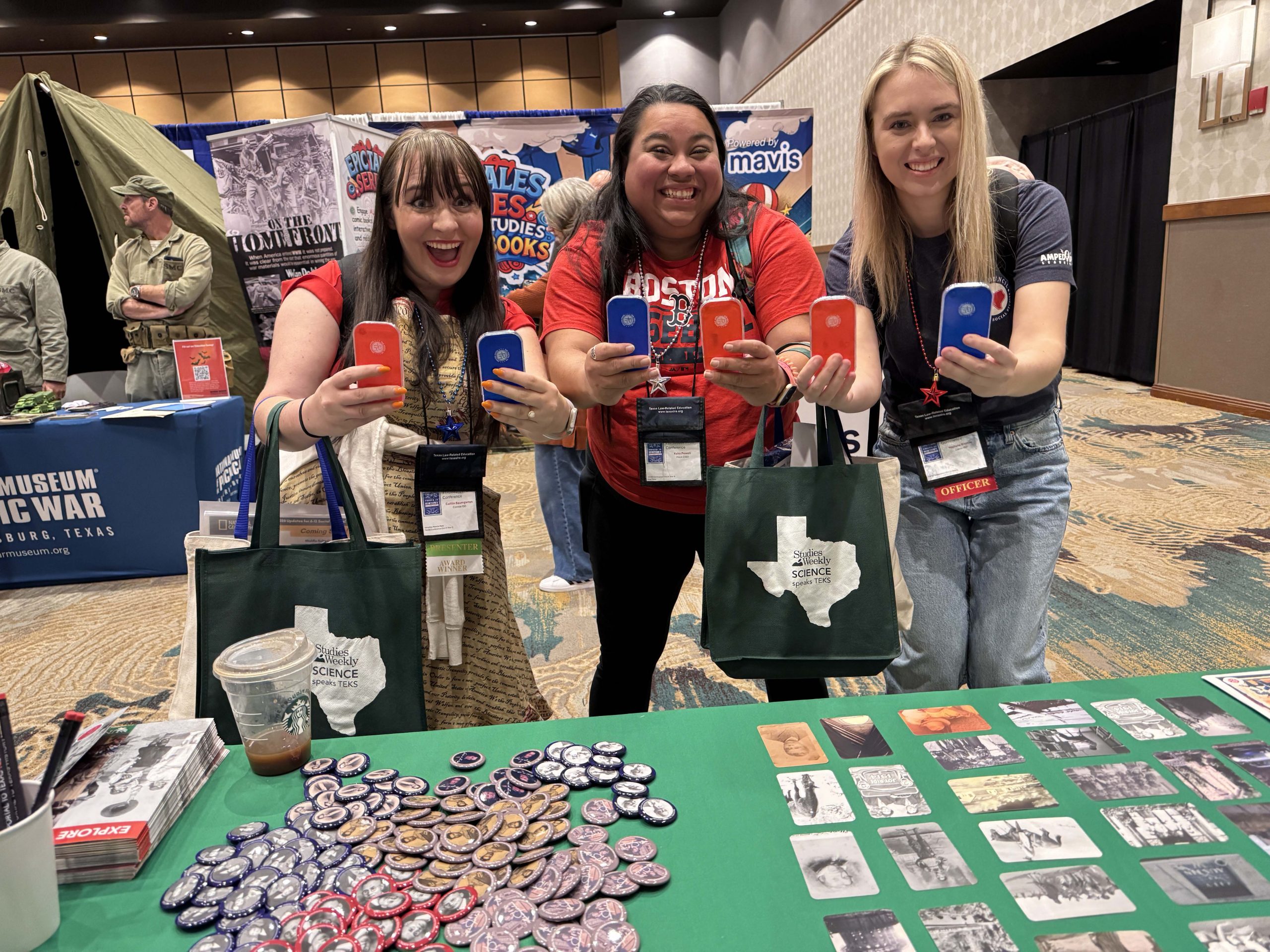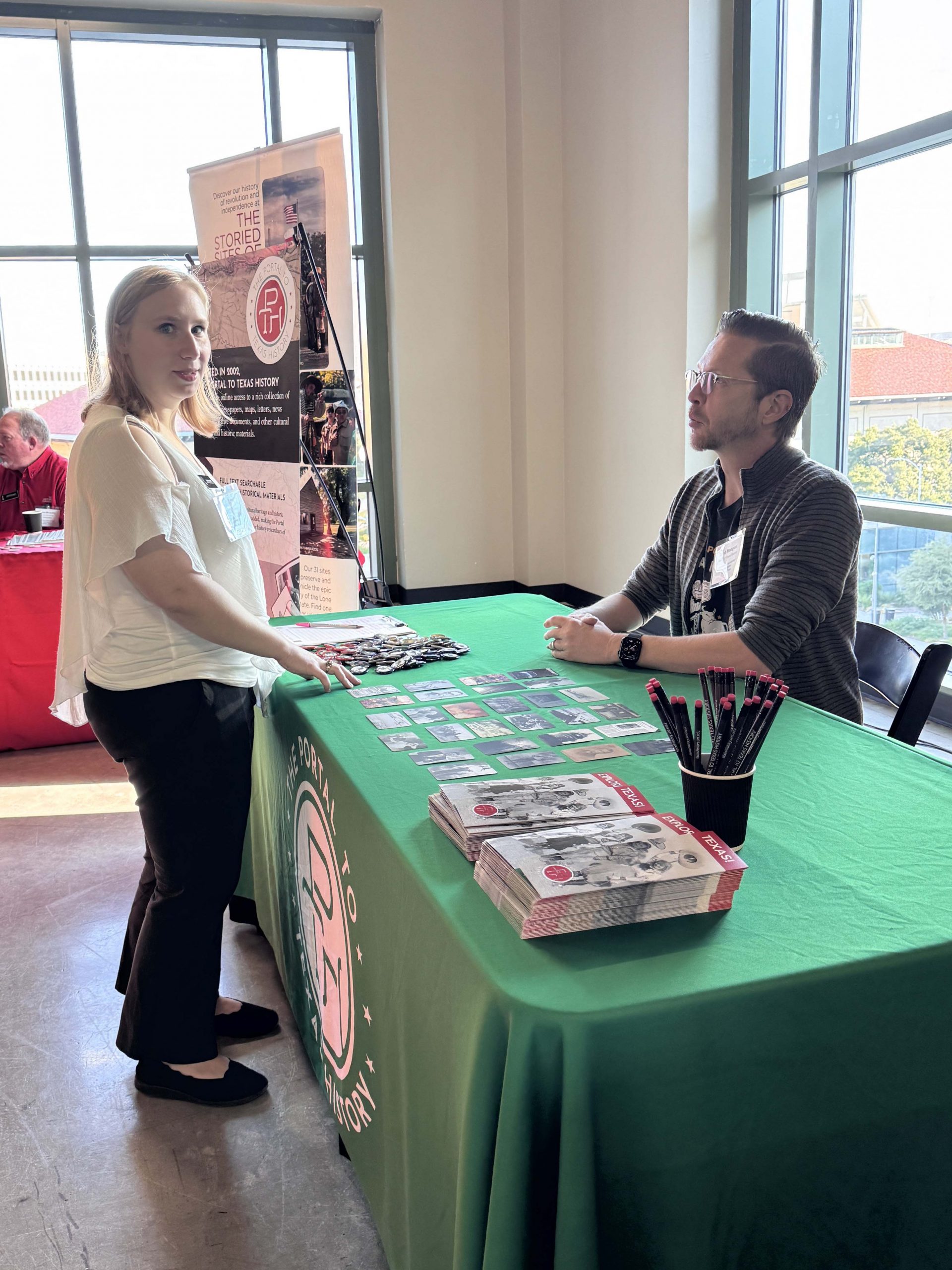As 2025 ends, we in the Digital Newspaper Unit thought it would be fun to look back at how newspapers celebrated the end of the year over time. Many Texas newspapers purchased mass-produced prints, some developed through chromolithography, to showcase elaborate front pages for Christmas or New Year’s issues in the early 1900s. The Newspaper Unit staff always enjoy seeing these December and early January pages, and we imagine that they represent a dedication to celebrating the end of the year on the part of newspaper publishers. These flashy front pages also afforded publishers an opportunity to boost revenue and promote local businesses, drawing readers’ attention to exciting events taking place during the holiday season.
This blog post celebrates the color and artwork in those historic newspaper issues.
 Closing out the 19th-century, the December 13, 1899, issue of the Shiner Gazette was not printed with color ink–something that was very rare until the 1910s–but the headline proclaimed “Christmas Going on its Yearly Round,” and depicted elaborate drawings of watches and jewelry that could be purchased from A.V. Schwab, who would put gifts away for delivery on Christmas day.
Closing out the 19th-century, the December 13, 1899, issue of the Shiner Gazette was not printed with color ink–something that was very rare until the 1910s–but the headline proclaimed “Christmas Going on its Yearly Round,” and depicted elaborate drawings of watches and jewelry that could be purchased from A.V. Schwab, who would put gifts away for delivery on Christmas day.
The December 23, 1909, Kosse Cyclone offered a full-page scene of Santa Claus delivering gifts to all the woodland creatures who had been good that year. With a population of approximately 700 at this time, Kosse was not a large or central metropolis, but rather a regional community that supported farms and ranches in southern Limestone County, and this front page represents an impressive investment by the publisher for their readers in 1909. As these images were mass produced, this same front page was also used in Anahuac, for The Progress.
scene of Santa Claus delivering gifts to all the woodland creatures who had been good that year. With a population of approximately 700 at this time, Kosse was not a large or central metropolis, but rather a regional community that supported farms and ranches in southern Limestone County, and this front page represents an impressive investment by the publisher for their readers in 1909. As these images were mass produced, this same front page was also used in Anahuac, for The Progress.
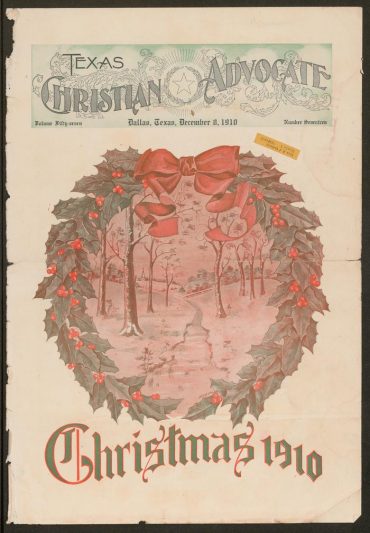
To close 1910, the Texas Christian Advocate printed a red and green front page depicting a wreath-bordered snowy lane, below which is printed “Christmas 1910.”
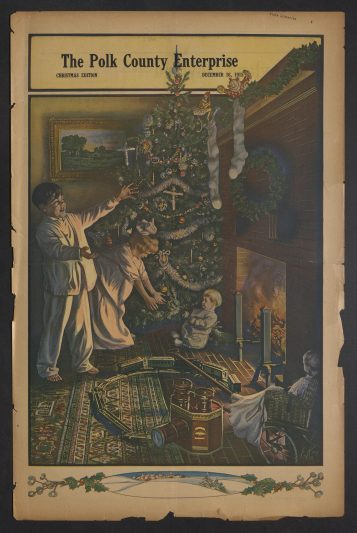
In Livingston, Texas, the Polk County Enterprise celebrated Christmas 1915 with a full-page, full-color image of children finding presents under a tree, in a room lit by cozy firelight.
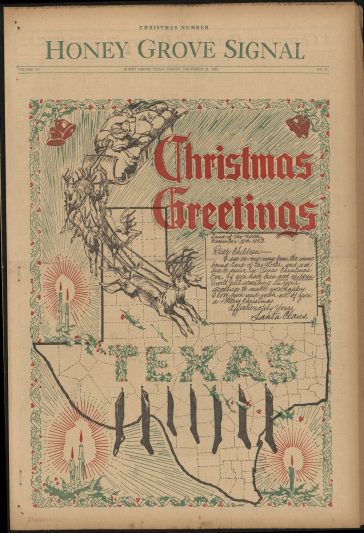
On December 21, 1923, Santa Claus wrote to the children of Texas to let them know when he would be bringing them toys and to assure them of his love. The Honey Grove Signal published this letter, in front of a red and green map of Texas, alongside an image of Santa’s reindeer and sled heading toward the Lone Star State.

In New Ulm, the front page from December 25, 1924, contained only a bit of text, including the title and issue information, and at the bottom of the page, “‘Twas the Night Before Christmas,” with the text surrounding a full-page, full-color image of Santa Claus surrounded by beautiful toys.

Near the Piney Woods of Texas, the Silsbee Bee issue from December 25, 1935, lets its readers know that they have hired some of “the world’s finest writers” to make their readers’ Christmas “merrie.” The border for this year depicts different holiday ornaments, printed in red and green, with a large Santa silhouette serving as the central image on the page, above which appears a red and green masthead proclaiming “For a Merrier Christmas: Gift Shoppers Edition.” It’s difficult to read this front page and not think about the editors trying to raise their readers’ spirits with this upbeat message and issue at the height of the Great Depression.

The Canadian Record offered red and green border similar to the Silsbee 1935 issue, with a “Joyous Christmas” masthead to celebrate December 1936, lauding that Santa Claus would be in town on December 19. With the Great Depression continuing, this front page indicates a commitment to spreading joy that we are excited to reproduce today.

Publishing its text in green at the top of the front page and red below the fold, the Cushing News from December 22, 1939, explains how the newspaper staff will be celebrating the holiday and will not be putting out an issue for December 29, offering “no guarantee as to the editors [sic] ability” during the holiday week.
In Texas, we are proud to be able to scan the original physical pages, for optimal digital representation of these beautiful issues. However you and your loved ones celebrate the holiday season this year, we in the Digital Newspaper Unit hope it’s filled with joy.




